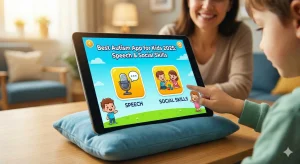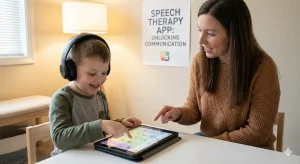Effective Therapies for Virtual Autism: What Really Works?
By Wellness Hub
Last Updated: September 17, 2024
In today’s digital age, screens are everywhere—from smartphones and tablets to computers and TVs. While technology brings many conveniences, it also poses challenges, especially for young children. One growing concern is “virtual autism,” a term that refers to autism-like symptoms in children, often linked to excessive screen time. Unlike traditional autism, which is a neurodevelopmental condition, virtual autism is believed to stem from environmental factors, mainly prolonged exposure to screens at a young age.
What is Virtual Autism?
Virtual autism is a term used to describe autism-like behaviors in children that seem to be linked to too much screen time. Unlike traditional autism, which is a condition present from birth and influenced by genetics, virtual autism is believed to be caused by environmental factors, mainly prolonged exposure to screens like tablets, smartphones, and TVs. Children with virtual autism may show delayed speech, have trouble interacting with others, or repeat certain behaviors, but these issues often stem from spending too much time on screens instead of engaging in real-world activities.
Read more: Virtual Autism: Things that you need to know
Causes of Virtual Autism: The Impact of Screen Time
The main cause of virtual autism is thought to be excessive screen time, especially in young children. During the early years, children’s brains are rapidly developing, and they need real-world interactions to learn and grow. When kids spend too much time on screens, they miss out on important opportunities to practice talking, playing, and interacting with others, which are key for their development.
Screens can be very engaging, but they don’t provide the kind of back-and-forth interaction that helps children learn. For example, watching a video of a bouncing ball is different from playing catch with a real ball and talking about it. Real-world play helps children learn words, develop motor skills, and build social connections, which screens can’t fully replace.
Also read: Preventing Virtual Autism: Easy Strategies for Parents
Effective Therapies for Virtual Autism
If you’ve noticed signs of virtual autism in your child, you might be wondering what steps you can take to help them thrive. The good news is that there are several effective therapies that can make a big difference. Let’s explore some of these approaches and how they can support your child’s development.
a. Behavioral Therapy
One of the most commonly recommended therapies for virtual autism is Applied Behavior Analysis (ABA). ABA focuses on understanding and improving behaviors that are important for learning and everyday living. Through this therapy, children are taught new skills and encouraged to reduce behaviors that might be holding them back.
ABA relies heavily on structured routines and positive reinforcement, which means rewarding your child when they do something well. For example, if your child makes eye contact or uses a new word, they might receive praise, a favorite toy, or another reward. This approach helps children learn in a way that feels encouraging and fun, making it easier for them to repeat positive behaviors.
Also read: Online Behavioral Therapy for Kids
b. Speech and Language Therapy
Communication is often a challenge for children showing signs of virtual autism, which is where speech and language therapy comes in. This therapy helps children improve their verbal skills, learn to express their needs, and engage in conversations.
Speech therapists use a variety of techniques, such as modeling and prompting, to help children learn. For instance, a therapist might model how to say a word or prompt a child to use words instead of gestures. Over time, these techniques can help children become more confident and effective communicators.
c. Occupational Therapy
Occupational therapy plays a crucial role in helping children with virtual autism improve their sensory processing and motor skills. Many children with virtual autism may be sensitive to certain sounds, textures, or lights, which can make everyday activities overwhelming. Occupational therapists work with children to help them manage these sensitivities and develop skills that are important for daily life.
For example, they might use activities like swinging, playing with textured materials, or balancing on a beam to help children better process sensory information. These activities not only improve sensory integration but also support motor skills, making it easier for children to participate in play and learning.
d. Reducing Screen Time and Promoting Real-World Engagement
A key part of managing virtual autism is reducing screen time and encouraging more real-world interactions. Here are some practical tips to help gradually limit screen time:
- Set Clear Limits: Start by setting specific times when screens are allowed, like after school or during weekends.
- Offer Alternatives: Provide fun alternatives to screen time, such as outdoor play, reading, or doing puzzles together.
- Be Consistent: Consistency is key. Make screen-free time a regular part of your child’s routine, so they know what to expect.
e. Parent Training and Involvement
As a parent, you play a crucial role in your child’s development. Many therapies for virtual autism include parent training to help you carry on the strategies at home. This might involve learning how to set up a structured routine, using positive reinforcement, or practicing communication techniques.
Creating a supportive and structured environment at home is vital. Simple changes, like having a consistent daily routine or setting aside specific times for play and learning, can make a big difference. It’s also important to be patient and celebrate small victories along the way.
Conclusion
Managing virtual autism can be challenging, but you’re not alone. Early intervention, the right therapies, and your involvement as a parent are key to helping your child. Recognizing the signs early and choosing therapies like behavioral, speech, and occupational therapy can make a big difference. Reducing screen time and encouraging more play and interaction in the real world are also important steps. Your role is vital—continuing what’s learned in therapy at home and creating a supportive environment will help your child progress.
If you see signs of virtual autism, stay proactive and seek professional help to find the best therapy for your child. Early action can lead to positive changes. Remember, each child is unique, so finding what works best might take some time. For more help and resources, you can visit Wellness Hub. Keep supporting your child with patience and consistency, and know that each small step forward is progress.
Frequently Asked Questions:
1. What is virtual autism, and how is it different from traditional autism?
Virtual autism refers to autism-like symptoms in children that are linked to excessive screen time rather than genetic or neurological factors. Unlike traditional autism, which is a neurodevelopmental condition present from birth, virtual autism is often caused by environmental factors like prolonged exposure to screens and can be more responsive to changes in lifestyle and environment.
2. What are the common symptoms of virtual autism?
Common symptoms of virtual autism include delayed speech, social withdrawal, lack of eye contact, and repetitive behaviors. These symptoms are similar to those of traditional autism but are triggered differently, mainly by excessive screen time.
3. How can I reduce screen time for my child with virtual autism?
To reduce screen time, start by setting clear limits and offering engaging alternatives like outdoor play, reading, or hands-on activities. Gradually reduce screen time and replace it with activities that encourage social interaction, creativity, and physical movement.
4. What therapies are effective for virtual autism?
Effective therapies for virtual autism include Applied Behavior Analysis (ABA), speech and language therapy, and occupational therapy. These therapies focus on improving communication, social skills, and sensory processing, and are tailored to meet the individual needs of each child.
5. How can I choose the right therapy for my child?
When choosing a therapy, ask key questions about the therapist’s experience, the techniques they use, and how progress will be measured. It’s important to select a therapy that suits your child’s specific needs and allows for adjustments as your child progresses.
6. How important is early intervention for virtual autism?
Early intervention is crucial for virtual autism because it increases the chances of reversing symptoms and improving development. The earlier you start therapy and make necessary changes, the better the outcomes for your child.
7. What role do parents play in managing virtual autism?
Parents play a vital role in managing virtual autism by continuing therapy strategies at home, creating a structured environment, and actively participating in their child’s progress. Parent involvement can greatly enhance the effectiveness of the therapies.
8. Can virtual autism symptoms be reversed?
Many children with virtual autism can show significant improvement when screen time is reduced and they engage more in real-world interactions and targeted therapies. While progress varies for each child, early action and consistent support can lead to positive changes.
9. How can I support my child’s progress outside of therapy sessions?
Supporting your child outside of therapy sessions is essential. You can reinforce what they learn in therapy by creating a routine at home, using positive reinforcement, and practicing communication and social skills through everyday interactions. Engaging in activities like reading together, playing games that encourage turn-taking, and spending quality time without screens can also help reinforce their progress.
10. Where can I find resources and support for managing virtual autism?
You can find a variety of resources and support for managing virtual autism through organizations, websites, and local therapy centers. For personalized guidance, expert advice, and access to supportive tools, visit Wellness Hub. Wellness Hub provides information on effective therapies, tips for parents, and professional support to help you navigate your child’s needs with confidence.
About the Author:
Anuradha Karanam
Speech-language pathologist (7+ years of experience)
Anuradha Karanam is a skilled speech-language pathologist with over 6 years of experience. Fluent in Tamil, Telugu, Hindi, and English, she specializes in parent counseling, speech sound disorders, fluency assessment, and speech-language evaluations. Anuradha excels at working with children with developmental disorders, offering creative and effective therapy programs. Currently, at Wellness Hub, she holds a BASLP degree and is registered with the RCI (CRR No A85500). Her patience, ambition, and dedication make her a trusted expert in her field.
Book your Free Consultation Today
Parent/Caregiver Info:
Client’s Details:
* Error Message








